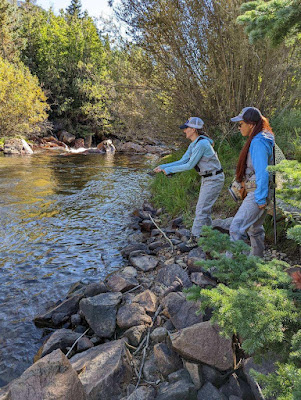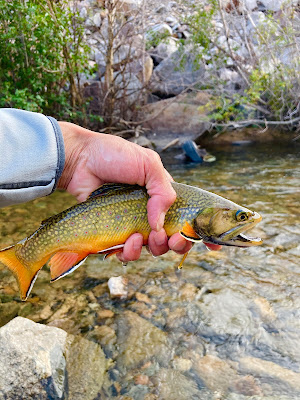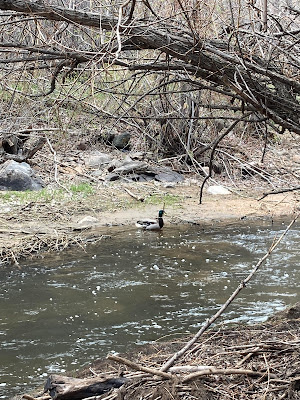Tailwater fisheries are those that exist solely due to the influence of a dam at the head of the river, or section of the river, that regulates consistent flow and temperature.
Tailwater fisheries offer year-round fishing opportunities and are especially important to fly fishers who wish to pursue fishing through the winter. Freestone rivers this time are frozen and unfishable. The stretch of water below the dam is ice-free. Further away from the dam will have icy conditions.
The South Platte River at Deckers offers year-round fishing close to the Denver area. Winter flows stay around 80 cfs with several miles of fishing from Cheesman Canyon and through Deckers. It is primarily dead drift nymphing with tiny flies.
The Cheesman Canyon stretch of the South Platte River is one of the most popular and beautiful tail water fisheries in the state. This stretch sits directly below Cheesman Reservoir, which provides for great water clarity and quality fishing year-round. From the Cheesman Canyon parking area, it is about 1.5-mile hike to the river, or a total of 5.3 miles in and out up to the dam.
Fishing report:
Fishing during the winter is quite different for the warmer seasons. Conditions will vary with catching fish this time of year. You will hardly find fish in the faster water until springtime when temperatures warm up. The fish can be found in the sleepier water, deep fish pots or pools. Fish have a slower metabolism during winter months. They expend less energy as much as possible for a meal. Set the hook with even the slightest pause. Quickly return fish into the water when temperatures are well below freezing. Cold temperature exposure can be harmful to the eyes, gills, and soft tissue of the trout. Fish with smaller tippet 5x or 6x.
Weather was mild with sunshine in the low 50's. Returning to colder days with some rain and snow.
Flows at 120 cfs
Fishing these days have been challenging and fishing tiny Mercury Midge #20-24, Black Beauty #20-24, RS2 #20-24, Juju Baetis #20-22, Bling Midge #20-22, Scud tan and orange, San Juan worm, Pheasant tail #22-2, Zebras Cream #20-24.
Some dry fly Griffiths Gnat #22-24, Mole Fly #22, BWO #22-24
Cat's Caddis Larva fished amazingly well for January. Be happy to tie some for those interested. Email me at cattoy.flyfish@gmail.com
 |
| Fishing the Stagecoach Tailwater can be extremely rewarding. |
Gearing Up:
Know your weather conditions ahead before your winter fly fishing trip. Be aware of any changes of conditions, wind, and the possibility of precipitation. This will greatly aid in your preparation of how to dress, or to not go at all. Safety is first and foremost your number one concern before anything else. Fish with a buddy, or always have a family member or friend know where you are going as well as a check in time of your return.
 |
| Take into consideration if it is windy with wind Chill factor. |
Winter base layers, or your first layer next to skin should be clothing articles made of polyester, wool, or silk blends. These synthetics have moisture wicking capabilities, or the ability to keep warm and dry conceals excessive perspiration.
Layers on top of your first layer should be clothing made of polyester, wool, or other synthetics. Examples are fleece pullovers or merino wool. I layer with polyester layers and fleece top part of my body, and wear Baleaf Women's fleece-lined hiking/ski pant that is windproof and water-resistant. I wear a polyester base layer underneath pants. They fit well under my waders.
To top your inner layers, an insulated hooded puffy that adds wind and weather resistance protection. It is the best way to counter the winds and below freezing temperatures.
Stay away from cotton!
Your outer layer is your first layer of defense. If you really want to stay warm, make your outer layer wind and waterproof. I prefer my outer shell made of the specially engineered material, Gore-Tex.
Winter waders of high quality, durable multi-layer system made with a permeable shell to help keep warm and dry. I purchase waders with full-size to be able to layer upper body and for room of jacket and shell inside wader.
Remember, layering is good, but not to the point of causing constriction. Constriction will cause poor circulation which in turn results in feeling cold.
Wader boots should fit comfortably with one pair of winter socks of merino wool and feet and toes stay warm. Stay away from cotton! Rubber-soled boots are a must. Felt soles are not recommended due to snow clumping.
Gloves are complicated with fly fishing but is absolutely necessary. There are many glove options available from fingerless, to half finger, and full-fingered gloves. Choose the right winning glove that works best for you for warmth and dexterity with the ability to use your fingertips for fly tying and rigging. Always take your gloves off when handling fish.
 |
| Half fingered wool gloves and hand warmers worn at wrist. |
Air-activated hand warmers can emit heat for up to 10 hours. There are also rechargeable reusable hand warmers you can purchase. They can last a good portion of the day in your pocket.
Have your favorite fly fishing hat with a visor to keep the sun out of your eyes. You can cap it with a warm, wool beanie. I have found wearing a hood is the best way to keep warm.
Sunscreen is a must to protect your skin from the sun as well as those overcast days. Overcast days, your skin is still absorbing up to 80% of the sun's rays. If the winds pick up, sunscreen will protect you from windburn. Neck gaiters add warmth as well as another option for sun and frostnip protection.
Protect your eyes from the harmful sun UV rays with a good pair of polarized sunglasses. A pair of quality polarized sunglasses will reduce the amount of water surface glare throughout the day. It will be less strain and squinting for your eyes, the opportunity to find the fish, and to see the underwater river structures.
A nifty tool I always carry especially if there is a lot of snow, is a telescoping magnetic pick up tool. Pick one of these up at your local auto store. This gadget fits easily in your fish bag. If you drop your winning fly in the deep snow, pull out his tool and wand the general vicinity. This tool will find your fly in the deep snow, or in shallow water.
Fishing on those frigid days can be frustrating with your guides and tip icing. My favorite, inexpensive trick is Chapstick. It won't prevent ice buildup, but it will help delay the amount of ice buildup. Apply a small amount of Chapstick on each guide and rub in with your fingertips. It will require reapplying as ice begins to build up again.
Carry a small microfiber towel for the use of drying your hands after handling fish. Packtwl makes a wonderful, small microfiber face towel that comes in a compact tote with a loop. You can clip this towel to your waist or hip pack, or vest. Dry your hands quickly after handling fish and grab onto hand warmers or put on gloves with disposable hand warmers.
A portable stove comes in handy to boil water for hot chocolate, soup mixes, or hot camping meals is quite awesome to have.
Frostbite:
Frostnip: relatively minor local cold injury that results from local vasoconstriction of blood vessels in response to cold. It does not involve freezing of the tissues. Ears, cheeks, tip of your nose, fingers, and toes are prone to local cold injury such as frostnip. Once the skin is warmed, no blisters appear, tissue is normal color but may be slightly shiny.
Frostbite: damage to tissue from freezing due to the formation of ice crystals between and with cells, rupturing the cells and leading to cell death. The earliest symptom of frostbite is pain at the involved site more often of our hands exposed or handing of fish. The pain is followed by numbness without pain because the tissue freezes and sensation and pain stop.
Superficial (frostnip): Affects the first or top layer of skin. No permanent damage to the tissue results.
Partial thickness (frostbite): Affects the upper layers of the skin. Minor damage to the tissues results. Following warming, redness my persist over several days followed by the appearance of clear or blood filled blisters. Deep frostbite skin may appear with large fluid filled blisters.
Full thickness (frostbite): Affects all the layers of skin plus muscle and may affect bone. Severe damage to the tissues including death results. The affected areas appear black, shriveled, and dry, or otherwise known as dry gangrene.
To reduce risk factors:
~ Know your environment and be prepared.
~ Bring adequate appropriate clothing for the environment and use a strategy of layering insulation, with inner synthetic "wicking" insulating layers and an outer shell layer.
~ Be attentive to yourself and your fishing buddies.
~ Maintain adequate nutrition and hydration.
~ Stay dry. Pace yourself to avoid sweating and overexertion. Remove or add layers of clothing as appropriate.
~ Avoid tight and restrictive clothing, waders, and boots.
~ Avoid alcohol, caffeine, and drugs because they predispose you to cold injury.
~ Do not ignore or tolerate numbness in your hands or feet.
Hypothermia: an abnormally low body temperature below 95 degrees F (35 degrees C) Think about this in regard to especially falling in the river. Hypothermia occurs as core temperature drops further. The body systems slow causing clumsiness, stumbling, mental confusion, and eventually unresponsiveness. I always have a set of clothes in the car if falling in the river happens.
Winter fly fishing can be blissful and rewarding. Dress smart be prepared with your gear for the adventure. Stay warm and enjoy winter fly fishing!
End with questions. You may also email me with your questions at: cattoy.flyfish@gmail.com


















































